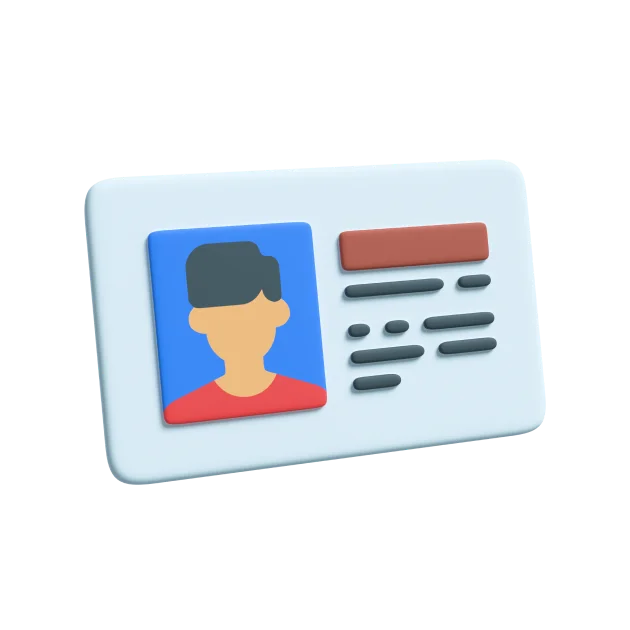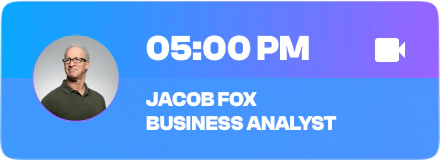Let’s talk about the Ideal Customer Profile (ICP) and why it is so important to the growth of your business. Whether you are a freelancer, a small business owner, or work for a large corporation, understanding which approach to take, ICP vs Buyer Persona, is the key to successful customer acquisition.
Have you ever wondered why some companies grow faster than others? It is often because they know who their ideal customer is.
Imagine that you work in sales or marketing. You have a goal – to attract as many customers as possible. Understanding customer-based marketing (ABM) helps us focus on the people or companies that are interested in our product. This is motivating, isn’t it?
So let’s implement ABM tactics into our marketing strategy together and compare Buyer Persona vs Ideal Customer Profile! Remember, they are not the same thing.
What is an ICP?
An ICP is a simple description of what kind of company would ideally fit your criteria for cooperation.
Usually, these are companies that have the characteristics that you have identified as critical to your product or service.
Here are some examples of ICP criteria:
- Industry the company operates in;
- Number of employees;
- Annual recurring revenue (ARR);
- Geography and language of communication;
- Technologies used;
- Size of the customer base.
It may seem like there are so many criteria. But in fact, this will help you focus on the customers that will be easier to work with. As well as understanding whether the question of choosing is worth it: ICP vs Buyer Persona.
An example of an ICP in action
Let’s look at a real example of what is an ICP! One of our SalesAR team’s clients is pavdy, a brand management and communications agency focused on law firms and SaaS solutions. We defined an ICP for them:
“Our ICP is a B2B SaaS company in North America or the CIS, with 50+ employees and at least $30M in annual revenue, serving small and medium businesses.”
See? We’ve clearly defined who pavdy is targeting. On the one hand, it’s simple and straightforward. But on the other hand, your team should identify key factors to include in the ICP and compare the Ideal Customer Profile vs Buyer Persona.
Having a clear ICP allows you to focus on companies that are interested in what you offer. And it helps you avoid wasting time on non-target customers.
What do you think about this? Do you already have an idea of your ideal customer? If not, don’t worry, you can start right now.
Write down the characteristics that are important for your product and start researching your target audience. Remember, this will not only help you increase sales, but will also make your business more sustainable and successful.
What are Buyer Personas?
A buyer persona is like a detailed description of a person who might be interested in your product. I wonder what problems he or she faces every day. How does he or she make decisions? It is important to understand.
If you are going to do ABM, you will need several personas created based on in-depth research. Remember, it is important to think about how your product can help. Who is the person you want to tell about your capabilities?
How to create a buyer persona:
- Identify the departments in your ICP. Who might need what you offer?
- Pay attention to your ICP. How many people are in each department?
- Choose the job titles to communicate with. For example, in a company with less than 350 employees, you might want to target executives. In larger companies, it might be better to communicate with middle managers. Who do you think will be more accessible and what will be more effective for the business if you compare ICP vs Buyer Persona?
- Search LinkedIn! Find the contacts of those people who match your criteria. Look at who your company has worked with before — this can give you useful information!
- Collect contacts. Create a database of 15-25 contacts by job title.
- Organize the information. Separate your contacts by geography, gender, professional experience, and interests. The more data you have, the better you will understand your persona!
- Create the perfect persona. Use the information you collect to create a generalized, fictional version of your ideal buyer.
Knowing what buyer personas are is very important. This will make your campaigns more accurate and successful.
The more accurate the campaign is, the higher is the return on investment (ROI) and return on ad spend (ROAS) in marketing activities.
How to Use Buyer Personas?
Let’s talk about how buyer personas can help your business. What is more important, the question is Ideal Customer Profile vs Buyer Persona? Knowing our customers, we can use both tools in different areas.
Product Development
It is very important to understand what customers need. Personas help us create product roadmaps. We can prioritize changes around what is really important to them. You wouldn’t like to waste time on something that no one needs, would you?
Marketing
ICP vs Buyer Persona: what is better for marketing strategy? Buyer personas can be used in marketing to create strategies. How about targeting specific keywords? Or prioritizing your promotional activities? This will help make your content more effective! Just imagine how much more response to your advertising campaigns this will bring.
Sales
The sales department also benefits. Understanding what your potential customers are facing allows you to better connect with them. You can prepare for their questions and needs in advance. It’s great when you can build trust!
Support
What about support service? Personas help you better understand what problems your customers face and what emotions they experience when something goes wrong. We’ve all been there, haven’t we?
Frequently Asked Questions (FAQs)
I often get asked about what an Ideal Customer Profile (ICP) is and how it helps sales and marketing departments, what are Buyer Personas, how to create a Buyer Persona. There are other questions as well. So I decided to add this section with some of them, which customers and contacts in my LinkedIn inbox ask most often.
What is an Ideal Customer Profile and how does it help sales and marketing book more sales appointments?
An ICP is a description of a customer or company that is a perfect fit for your product or service. Why is it important? Because a clear ICP helps us understand who our potential customers are, making our efforts more productive.
These profiles are important for B2B sales and marketing. They are the key to determining the strategic direction of your company if you are aiming for success in sales and marketing activities. By defining your ICP, you will know exactly who, when and why.
What is the purpose of developing an ICP?
If we correctly compare the Ideal Customer Profile vs Buyer Persona and determine which accounts can become valuable customers, it will simplify our path to success. We can use data like annual contract values (ACV) and lifetime value (LTV) to pinpoint who to target. This is the foundation of target account segmentation.
Why is ICP development is so important to sales and marketing success?
Interestingly, taking the time to create an ICP and understand the difference between an ICP vs Buyer Persona can yield some impressive results. For example, you may have faster sales cycles, higher average ACV, higher LTV, and higher conversion rates. Isn’t that great?
How the SalesAR team uses ICPs to maximize ABM activities
Now let’s look at how our SalesAR team uses ICP to power their Account-Based Marketing (ABM) strategy. As a B2B business development agency, we focus on the pros of each tool in the Ideal Customer Profile vs Buyer Persona comparison to create our responsive email marketing campaigns.
Here’s how we do it:
- Research. After you and our account manager discuss the process, we will fill out the ICP form and start creating the ICP list.
- Buyer personas. Once you approve the list, we will collect data on your target customers.
- Unique messaging. Our copywriter will analyze the Ideal Customer Profile vs Buyer Persona and create customized messages for the email.
- Engagement strategy. Next, the sales development representative (SDR) will send emails and start communicating with contacts to set up meetings.
- Reporting. The manager will always keep you updated on every step and explain what is more important: ICP vs buyer persona.
In fact, without a clear ICP, we would not be able to set up effective ABM campaigns. But don’t worry, you’re not alone – we’re here to help!





